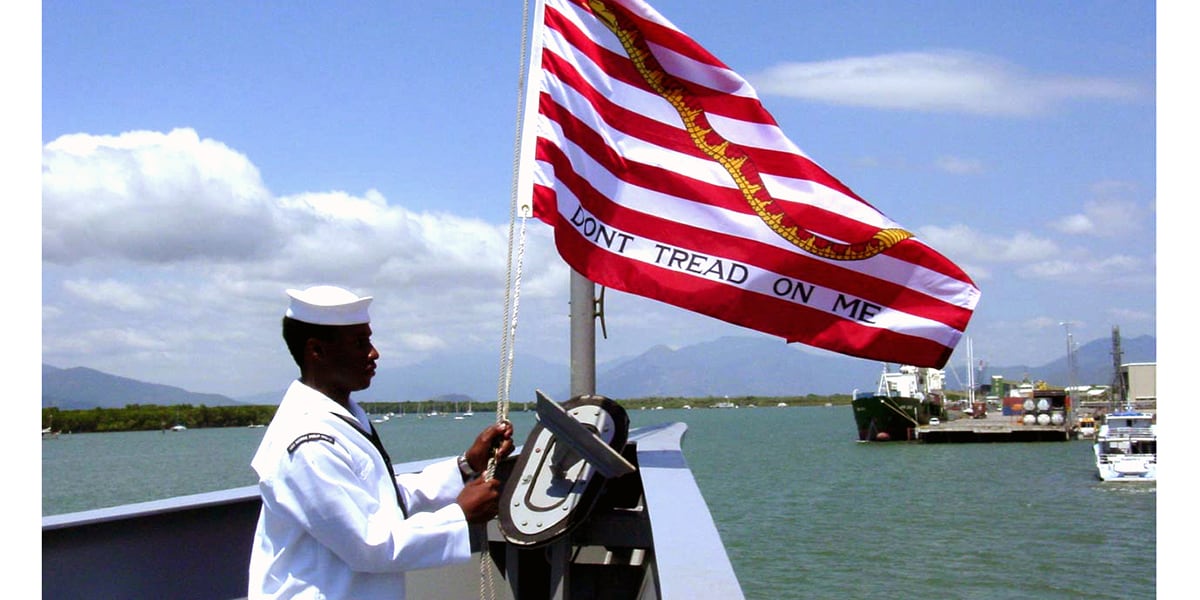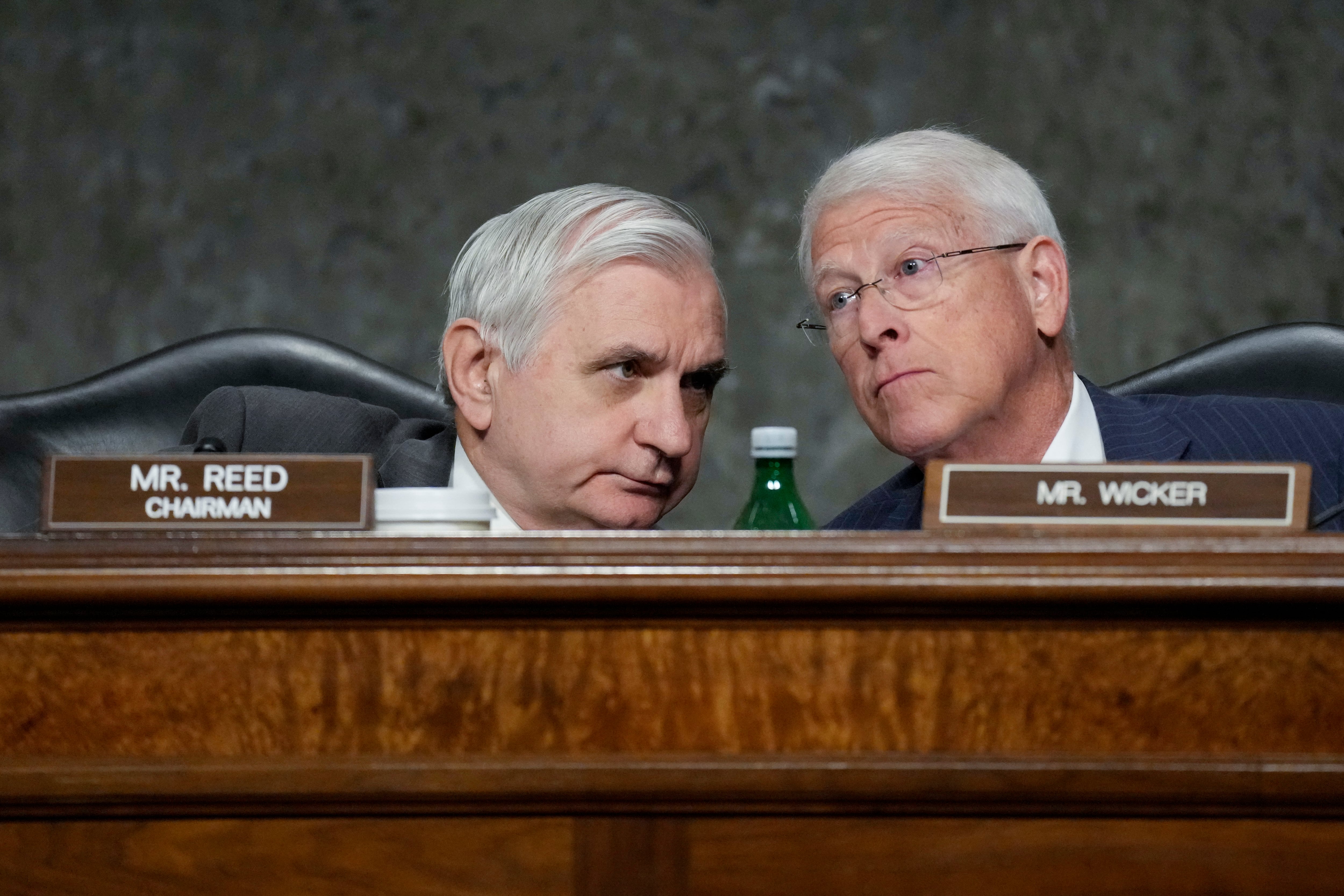The resurgent “great power competition” at sea now officially trumps the Global War on Terror — at least on U.S. Navy ships.
Starting with morning colors on June 4, the Navy will return to flying the “Union Jack,” a small blue flag emblazoned with the stars of the 50 states — identical to the top left corner of the national ensign — from their jackstaffs, small flagpoles mounted on the bows of all Navy vessels when in port or at anchor.
Announced in NavAdmin message 039/19 and a Navy press release on Thursday, the policy change returns the “First Navy Jack” — and its “Don’t Tread on Me” rattlesnake slithering across thirteen red and white stripes — to its former role of signifying the oldest commissioned warship in the operational fleet.
It currently flies from all Navy jackstaffs.
“The Union Jack is deeply connected to our heritage and our rise as a global nation with a global Navy,” said Chief of Naval Operations Adm. John Richardson in his released statement. “The Navy is a symbol that projects American values to the world. Just as the Navy embodies the values and principles that we hold dear, our very appearance in port and at anchor communicates important messages.”
The U.S. Navy’s Union Jack shouldn’t be confused with the United Kingdom’s national flag of the same name.
Richardson’s swap out wasn’t supposed to happen until the Global War on Terrorism ended. Then-Secretary of the Navy Gordon England ordered all U.S. Navy ships to fly the First Navy Jack starting on Sept. 11, 2002, the first anniversary of the terror attacks in the United States by Al Qaeda.
But after more than 17 years of war and with the Navy shifting from supporting counterinsurgency operations in Iraq, Syria, Afghanistan, Somalia and other parts of the world to confronting rising rivals, especially in Asia and Europe, Richardson moved to refocus the symbolism of the flag, too.

The June 4th date to switch out the flags also is deeply meaningful to both the Navy and the nation it protects. This year, it marks the 77th anniversary of the beginning of the Battle of Midway.
That victory over the Japanese turned the tide of World War II in the Pacific and restored America’s Navy as the dominant maritime force in the vast region.
“Make no mistake: we have entered a new era of competition," Richardson said in the release. "We must recommit to the core attributes that made us successful at Midway: integrity, accountability, initiative, and toughness.”
The Union Jack became the standard “Navy Jack” on June 14, 1777. And except for a symbolic 14-month period during the 1976 U.S. Bicentennial celebrations, it was in constant U.S. Navy service. The only change was a gradual expansion of the numbers of white stars on the banner as more states joined the union.
As for the “rattlesnake jack,”come June 4 it will be proudly flown on the Blue Ridge, the Japan-based flagship of the 7th Fleet.
Before Gordon England’s 2002 policy shift, that honor fell to the now-decommissioned aircraft carrier Kitty Hawk.
And Richardson’s message indicated that sailors will still be allowed to sport the First Navy Jack patch on the upper left sleeve of both the Type II and Type III Navy Working Uniforms.
Mark D. Faram is a former reporter for Navy Times. He was a senior writer covering personnel, cultural and historical issues. A nine-year active duty Navy veteran, Faram served from 1978 to 1987 as a Navy Diver and photographer.








